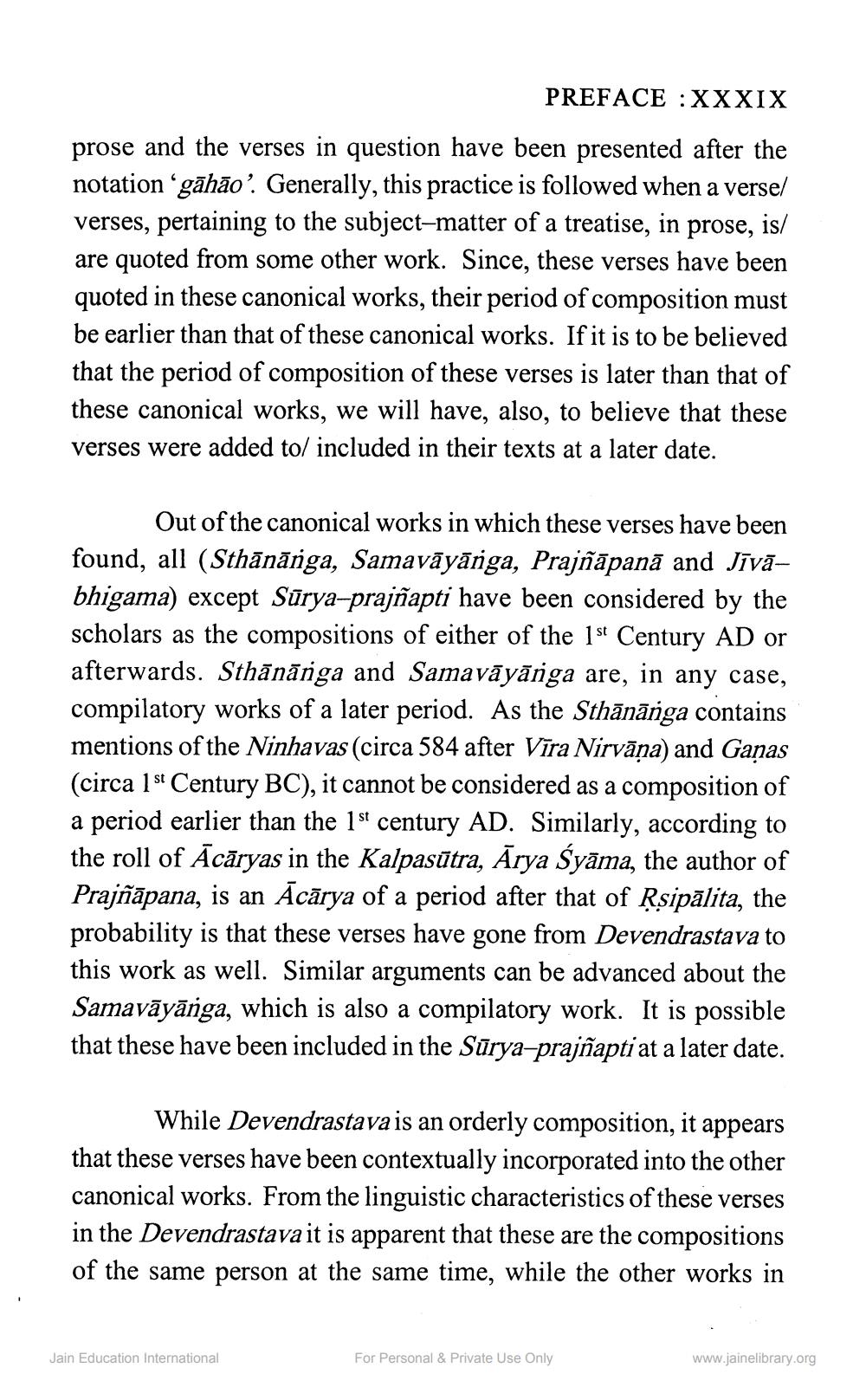________________
PREFACE :XXXIX
prose and the verses in question have been presented after the notation ‘gāhāo? Generally, this practice is followed when a verse/ verses, pertaining to the subject-matter of a treatise, in prose, is/ are quoted from some other work. Since, these verses have been quoted in these canonical works, their period of composition must be earlier than that of these canonical works. If it is to be believed that the period of composition of these verses is later than that of these canonical works, we will have, also, to believe that these verses were added to/ included in their texts at a later date.
Out of the canonical works in which these verses have been found, all (Sthānārga, Samavāyānga, Prajñāpanā and Jīvābhigama) except Sūrya-prajñapti have been considered by the scholars as the compositions of either of the 1st Century AD or afterwards. Sthānānga and Samavāyānga are, in any case, compilatory works of a later period. As the Sthānānga contains mentions of the Ninhavas (circa 584 after Vīra Nirvāṇa) and Gaņas (circa 1st Century BC), it cannot be considered as a composition of a period earlier than the 1st century AD. Similarly, according to the roll of Ācāryas in the Kalpasūtra, Ārya Syāma, the author of Prajñāpana, is an Ācārya of a period after that of Ķsipālita, the probability is that these verses have gone from Devendrastava to this work as well. Similar arguments can be advanced about the Samavāyānga, which is also a compilatory work. It is possible that these have been included in the Sūrya-prajñapti at a later date.
While Devendrastava is an orderly composition, it appears that these verses have been contextually incorporated into the other canonical works. From the linguistic characteristics of these verses in the Devendrastava it is apparent that these are the compositions of the same person at the same time, while the other works in
Jain Education International
For Personal & Private Use Only
www.jainelibrary.org




